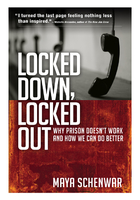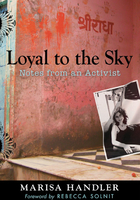The First Secret of Improvisation
Yes! Space
Imagine . . . You are backstage at a theater, listening to the sound of an excited crowd taking their seats out front. As you stare at the empty stage, you suddenly realize that you have no script, no costume, no props. You look around at the shadowed faces of the other people backstage, and from their nervousness you realize that they also have no idea what’s going to happen next. Suddenly, the lights dim in the house and go up onstage. It’s your cue. You have to go out!
You’re pulled onstage by the motion of the people behind you. One of your troupe members steps up to the lip of the stage and says, “I need a one-word contribution.” Someone in the back of the audience shouts, “Vegetables!” The audience laughs mildly and your troupe member accepts it. “Great! Vegetables is our subject!” He steps back. Then nothing else happens.
The faces of the audience regard you and the silence feels crushing. You’ve got to do something! So, without a net, you step out and proclaim, “I feel like a rutabaga!”
The crowd titters, but you don’t know what to say next. Silence stretches out in front of you and you start to get warm around the armpits. Before you know it, a hand slaps you on the shoulder and one of your troupe says, “Yes, and you look like one, too!”
The crowd laughs . . .
Does this sound like a nightmare? A movie script? A joke?
Actually, it’s what happens every night to an improvisational actor. Improvisation is an art form that demands that a troupe of performers walk onstage in front of an audience when they literally do not know what is going to happen next. The troupe onstage asks the audience to supply ideas for characters, a plotline, a style of music, a current event, anything. Taking that idea from the audience, the troupe starts to create a show, play, comedy scene, or game. The troupe members think entirely on their feet, making it up as they go along. They really never know, from moment to moment, what the other troupe members might say or do. They just have to go with it and make the performance work.
I’ve spoken to people who have watched improv and can barely believe it’s real. “How do they do that?” they say, or “It’s incredible that they can come up with all of that stuff on the fly. It must be a special talent!” or “There has to be a trick.”
The truth is, there are a few tricks. But these tricks are actually a solid set of guidelines that make it possible for improvisers to work wonders. They are simple, effective, and impressive. And you, too, can use those guidelines in your work and life to improve performance, collaborate radically, and build trust.
When we adopt the improviser’s mind-set and behaviors, we create trust every day, moment by moment, in the workplace. We will dive into the specific definitions, secrets, and behaviors of improvisation that I have seen applied in the workplace for over a decade.
We all improvise, every day. Every time we deal with an unexpected setback in the office or collaborate on a great project with our team, we are using behaviors grounded in improvisation. Wouldn’t it be nice to know how to do it well, like the professionals? And while we’re improvising, wouldn’t it also be incredible if we could build a strong, effective, and supportive network of trust?
To do so, we need to explore the key secrets of improvisation.
In the onstage scene described above, you and your fellow improvisers were a living example of the first secret of improvisation, Yes! Space. A troupe of improvisers can build a game, a scene, or an entire one-act play in the moment because they have agreed to say yes.
The Yes! Space concept allows for endless possibility, and is very easy to accomplish. To fully understand what happens in Yes! Space, let’s break it down into components:
image Say yes
image Put the critic on hold
image Make it public
Say Yes
The very action of saying the word yes is critical to improvisation. It’s also key to building a collaborative space where people believe they can take risks and be creative. Saying yes is an effective tool for both the improv stage and the workplace.
Think about the vegetable scene onstage. As you remember, you were onstage, in the spotlight. There was no question that you had to act, even though there was no plan. You blurted out the first thing that came to you: “I feel like a rutabaga!” Then one of your troupe members joined you in the scene. She immediately agreed with you. She said, “Yes, and you look like one, too.” The very first word your troupe member said was yes. You experienced Yes! Space. It’s really that simple. Your contribution to the performance, being a rutabaga, was immediately accepted. No assessments, no lifted brow, no devil’s advocate. Just “Yes!”
The power of that little word is amazing. By taking the action to say the word yes you have entered into positive possibilities.
This power of yes is not a new concept, and it is not confined to improvisation. Many modern disciplines have explored the concept of positive power, and they all agree on the transformational power of positivity. Unfortunately, positivity runs counter to our natural propensity to be negative, and it takes work. For example, researchers have discovered that we actually are wired for negativity in our language and culture. Of 558 emotion words in English, 62 percent are negative. And when people are shown photos of bad or good occurrences, we spend a longer time viewing the bad ones.[1]
We have to work harder to learn to use Yes! Space. That might mean getting comfortable with a little discomfort. But the benefits are very much worth the work.
image yes is a world
& in this world of
yes live
(skillfully curled)
all worlds
FROM E. E. CUMMINGS, “LOVE IS A PLACE”[2]
Getting to Yes is the Harvard Business School study and book on collaborative negotiation.[3] It changed the face of negotiations and opened a new space for both sides to find the best result in a negotiation. The work of these authors overturned the notion that negotiations must be confrontational, difficult events.
Dale Carnegie based his blockbuster How to Win Friends and Influence People on the concept that smiling and expressing a genuine curiosity for others can lead to personal success in life and more sales in business.[4] Consistently questioning and seeking to serve the other person’s needs builds safe environments and relationships and makes sales. People prefer to give their money to people and organizations they trust.
Stephen Young, the author of MicroMessaging, discusses the great effect of microscopic positive behavioral changes.[5] Simply by nodding, making eye contact, or saying a person’s name with respect, Young contends, you have the power to influence how others perceive that person. So the act of saying yes in your slightest inflections, and in a public way, can have a gigantic effect on another person’s confidence and success.
The concept of appreciative inquiry contends that, rather than seeking to solve problems in a corporate environment, companies need to focus relentlessly on what they’re doing right. That upon which you focus, grows. Under the power of the growth of the good stuff, the bad stuff will minimize.
The combination of Yes! Space and appreciative inquiry had a great influence on one of the nation’s top children’s hospitals. In 2008, the hospital was undergoing major changes in both clinical and administrative functions. We created an improvisational engagement that enabled participants from all areas of the hospital to focus on their ultimate goal: better patient outcomes. During times of great change in organizations, we often see consistently negative behaviors and competition. By embracing the improviser’s mind-set and behaviors of Yes! Space, this hospital staff was able to approach the change phase positively and collaboratively.
In the improvisational mind-set, any contribution, no matter how ridiculous, is greeted with immediate agreement. As an improviser, I could trust that if I stepped out onstage and shouted, “I’m the queen of Sheba!” all of my troupe members would say, “Yes, you are!” and start treating me like the queen.
By voicing the word yes, you are saying yes to possibility. Yes is not a literal commitment, as in “Yes, we will.” It is a commitment to considering a possibility, as in “Yes, we could.” This means that every idea or contribution is considered valid. No one sneers, shakes her head, or says no the moment an idea pops out of someone’s mouth. The improviser’s belief that every idea is valid also assumes that every person is valid. Simply because an idea has been contributed, improvisers believe it is imperative to acknowledge its existence and importance by saying yes to both the idea and the person. Saying yes becomes a reflex for improvisers, and it can become a reflex for you.
The particular idea offered may not be the one we pursue. We have simply agreed that it could be one we pursue and that we will explore it together. By agreeing to give it a chance to live and breathe, even for two minutes, we have said yes to its possibility.
Saying yes is imperative for improvisation because the performance would never go anywhere if we kept denying ideas. When I shout, “I’m the queen of Sheba,” my troupe member could say, “No, that’s not a good idea. Let’s be mechanics instead. I know all about mechanics but I don’t know anything about the queen of Sheba, and neither do you.” After that, another troupe member could say, “Mechanics aren’t funny. Let’s sing a song instead.”
Can you imagine how dumb that would look onstage? Time would be wasted, the audience would be confused, and the troupe would not be working as a team, only as individuals out for themselves.
Yes! Space and saying yes means that we are going to get the performance rolling right away. Because there are no preconceived notions about what must happen, as there is in a scripted show, we can accept anything. And by accepting every possibility, at least for a while, the performance moves quickly and efficiently.
What does the say yes reflex mean for everyday encounters? Whenever I work with groups, the event organizers approach me afterward to discuss the high level of engagement: “So many people spoke up! We had people contributing who had never engaged in a training session before! How do you do it?”
I say yes. That’s how I do it.
The first word out of my mouth, every time someone contributes, is yes. When that happens, the group learns that it’s safe to share. They realize that they won’t be criticized or ignored, and suddenly they want to start being a part of the conversation. When I ask open-ended questions, there often are moments of silence until some brave soul decides to fill the silence. When they are greeted with agreement, they feel validated, strong, and they contribute again. Then the people around them start to contribute and soon you have a room full of interacting people.
Try it sometime. You’ll be amazed at the exponential increase in engagement.
When we say yes, we’re agreeing that others have the right to air their ideas, and we are saying yes to possibility. As the session progresses, we may debate the idea or change to another topic, but we can always agree that a person’s contribution was worthwhile by saying yes in that moment. This can be particularly effective when people are struggling or need to share something difficult. By saying yes, we can create a place in which it is safe for everyone to share.
I remember a particular session when my ensemble was working with groups from an insurance company that included call center personnel, managers, and even board members. We had a tight time frame in which to teach a few concepts. One woman who had not spoken up during the entire session responded to our discussion of Yes! Space by saying that she felt ignored by her colleagues and that people never thanked her for her hard work. She was, by nature, a rather gruff person.
I said, “Yes, and that must be hard for you. What more can you tell us about your feelings on this?” She shared that she loved her work and really wanted people to recognize her accomplishments. At that point, other members of the group chimed in and said they would agree to be her sounding board. One man even said, “Yes, I noticed your good work. I’m sorry I never commented on it.”
The conversation was cathartic and positive, and in a few minutes the woman asked me to continue with the exercise, for which she volunteered.
The point here is not so much her response as the response of the in-house trainer after the session. She thanked me for managing the event and then singled out that particular moment in the session.
“I would have been so scared!” she said. “I would have just tried to steer the conversation back to the agenda and not comment on that uncomfortable situation. I would not have wanted to let her keep talking for fear it would become a big issue. I’m so glad you managed it!”
Saying yes does indeed create some risk, but it also creates resolution, as it did for the woman who needed to be heard.
Put the Critic on Hold
Imagine a critic. In my mind, I see a wizened pundit peering over his glasses with a sarcastic sneer. He knows so much more than me. I know he’ll discount or even laugh at anything I say. And if he really hates an idea, he’ll literally scream, “No!”
Put him on hold. Seriously. Punch the pause button on the video in your brain and stop him in his tracks. This is absolutely necessary to Yes! Space.
Putting the critic on hold addresses how Yes! Space deals with something we want to reject. Saying no is a human defense mechanism. When we are faced with an idea or situation that makes us feel surprised or uncomfortable, it is safer to say no. That way, we will not need to stretch, change, or say or do anything that feels risky or scary. We are trained to be logical, rational, linear thinkers. When I suggest that I am the queen of Sheba, you may first react with logic, reason, or even sarcasm. It is a ridiculous statement and it would be far safer to simply kill the idea than to take part in it.
Putting the critic on hold is the loophole for the logical mind. It’s another reflex that teaches your brain to say to itself, “That sounds utterly ridiculous and improbable. However, I am going to stop myself from using negative judgment right now. I’m going to allow my brain to agree that this idea is possible, if only for a little while.”
Knowing that evaluation and critique can happen later also allows the critic to relax. The critic in your brain can say, “OK, I really want to speak up now, but I’ll lie low until this idea has been fully, positively vetted. Then I’ll be better able to judge its merit.”
Every time you see a movie featuring aliens, space travel, fictional creatures, or anything you know is not real, your brain puts the critic on hold. For those two hours in the movie theater, we agree to believe the impossible is real. If every time a weird, creative idea arose for a novelist or scriptwriter, his or her colleagues said, “That doesn’t exist. Don’t do it,” we would have no Star Wars, no Lord of the Rings—no SpongeBob, for that matter.
Let’s think about our discerning, professional minds. At school and at work, we’re evaluated on how critically we can think. We like to ask questions such as “Where are the problems? How can we anticipate all the bad stuff?”
If you are handed a document to review, the first thing you look for is typos, bad grammar, loose content, and you send it back full of red ink and comments on what was wrong. If your significant other or child comes up with a crazy idea for the weekend that doesn’t immediately appeal to you, you probably try to introduce doubt. And during meetings, if someone goes off the agenda with a new idea or suggestion, we inwardly seethe. When a new employee throws out a suggestion, it is often met with any number of the following responses:
“I don’t know about that.”
“We tried it two years ago and it tanked.”
“Good idea. But it will never work.”
When the critic moves into our relationships with people, we shut down contribution, ideas, trust, and Yes! Space.
You may be thinking, “I’m a lawyer; I have to say no sometimes.” Or “I’m a parent. For the safety of my children, I have to say no sometimes!” You’re right. You do. This is where theory meets practical application. Yes! Space does work onstage, but even improvisers sometimes introduce no for the sake of comedy. If that scene with the vegetables had gone on for a while and then had become boring or was getting no reaction from the audience, believe me, a good improv troupe definitely would have switched gears. The troupe would give the idea space to grow, to be tested, but if it wasn’t going to work, they’d realign for the sake of the show.
Sometimes, we just have to say no. One great way to begin getting used to Yes! Space is to learn to say no in the Yes! Space. My ensemble and I facilitate an activity about finding different ways to say no and involving another person in the solution. It opens new avenues for everything from effective negotiations to better client interactions. It teaches you to communicate in a way that brings people into collaboration rather than conflict. The key is to ask open-ended questions about what someone really wants and about their needs and motivations.
The next time you want to just say no, try to do it without using the words no, but, if, however or any negative contraction such as can’t, won’t, don’t, shouldn’t, and so forth. It will be tough and frustrating at first. We often fall back on telling or demanding, relying on negative words. But if we first seek to understand, some surprising things can arise.
Question, question, question. Use phrases like “Help me understand” and “Tell me more about your ideas behind this.” You may discover a middle ground to replace the no, and the person you’re speaking with may realize that the best answer is no without you ever having to say so.
I worked with a marketing manager at a large national bank who had been an improviser in college, and she related a funny story during our session. When she married, she told her husband all about the secrets of improv. However, he started holding her accountable to those principles. Whenever they had an argument, he would smile and say, “You’re denying me! You’re not saying yes!”
The whole group cracked up at her story, and we went on to talk about how saying yes does actually work in conflictive situations. Her husband was reminding her that, although they had different opinions, she had to remember to honor his, listen to his, and consider the possibility of accepting his. He understood that he might not get his way, but he was asking for the conflict to be positive in nature.
Putting the critic on hold is a way to quicken the pace of collaboration. Think about the vegetable scene again. You are onstage in front of an audience that is expecting a performance right now! You didn’t know they would suggest vegetables, and it surprised you. You’d certainly rather pick a subject that you know more about or think might be easier to use as a comic foundation. You are feeling pretty uncomfortable already, but something has to happen. If you don’t do something with your troupe now, the entire show, all the money invested in the venue and rehearsals, lights and attendants, will go out the window. The audience will demand its money back, bad reviews will circulate about your lack of professionalism, and the theater could close. By not falling prey to the critic, you can get the show rolling immediately.
Putting the critic on hold is one of the toughest demands of Yes! Space. It requires adjusting and changing your mind, your opinion, and your actions. It can be difficult even for trained improvisers, because the unexpected can really surprise and throw a person off.
I’ve been surprised many times onstage when a troupe member introduced something I didn’t expect or like. But I know I have to adjust and keep the reality working onstage. Maybe I’m pantomiming digging a hole but my troupe member looks at my movements and interprets something else. She says, “Rowing a boat can be such good exercise.” I want to feel mad that she misinterpreted my intentions; I want to take control of the scene. But in Yes! Space I’ve got to put my critic on hold. I’ve got to dump my idea and justify the fact that we are now in a boat.
In real-life situations, I’ve struggled with this part of Yes! Space. When someone tells me something I don’t agree with, my improviser’s reflex pushes me to say, “Yes!” But then I pause, because even though I’ve followed through on the first aspect of Yes! Space (saying yes), my brain needs time to adjust to the new reality and to put my critic on hold. I have to think to myself, “OK, I didn’t expect that idea and I don’t like it right off the bat. However, it is valid, and this person deserves the chance to air the idea with someone who will support it in a positive way.” After I’ve quieted the screaming critic, I can keep moving forward. The critic will have her chance to speak later.
It’s interesting to note that following through on these concepts is easier at work or onstage than at home. I’ve always believed that if you can put a management or interpersonal concept to the test at home, you can make it work anywhere. For instance, I once returned from conducting a workshop focused on Yes! Space when my daughter, Kate, who was four years old at the time, had a friend over. The kids were happily engaged in the basement and as I cooked dinner I noticed out of the corner of my eye that Kate was running up and down the stairs. First she changed into her bathing suit, and then she was carrying different toys down from her room. I heard laughing and felt confident that all was well. Then, about twenty minutes later, Kate’s friend came up and announced, “Kate is pouring buckets of water into the playroom. Is that OK?”
I ran down to discover about an inch and a half of standing water in our slightly sunken basement playroom. In my greatest moment of self-control ever, I put my critic on hold. The critic wanted to scream, “What are you doing?! You’ve ruined our basement and your toys! Get to your room right now! Time out!”
Instead, I tried to think about the lessons I had just been espousing and I said, “Kate, darling, can you help me understand why you poured water into your playroom?” And my little girl said, “Oh, Mommy, remember yesterday you said you were so tired of winter and missed the pool? See, I made a pool right here, and we can go swimming soon and you’ll be happy!”
I’m so glad I didn’t let the critic speak first. Granted, it was a terrible cleanup job, but Kate and I did it together and we both learned a few things that afternoon. I learned that understanding underlying motivations is key to building relationships, and she learned that water does not work everywhere.
Make It Public
The last and most powerful way to create Yes! Space is to make it public. By entering Yes! Space with at least one other person, the event becomes public. However, it also involves some risk, because it forces us to take action on our positive intentions. We may want to support others’ actions or ideas, but until we publicly engage, we have not shared that power.
Yes! Space can be an individual activity. We can have immediate positive thoughts, say yes to occurrences and unexpected events in our lives, and put the critic on hold in the case of our own ideas and what we see and hear. However, Yes! Space in its truest improvisational sense is a team experience. We engage and risk together, and when we involve even one other person we make it public.
There’s a very simple wrap-up game my ensemble plays in our workshops. We stand in a circle. One person turns to the person on his or her right. The two people make eye contact, raise their fists in the air, and shout “Yes!” simultaneously. Then the second person turns to the right, makes eye contact with a new person, and together they shout “Yes!” The yes goes all the way around the circle, speeding up and gaining volume as it goes. The people laugh and watch, anticipating the moment they’ll join the yes circle as well. At the end, we all shout “Yes!” one last time together, facing the middle and watching one another.
When I ask participants “Where is the Yes! Space in this game?” they move to the middle of the circle. The entire environment, the whole room and all of us in it, is part of the Yes! Space. We just created it. By paying it forward and giving the yes to each member of the group, we created organizational Yes! Space. We have made it completely public and involved everyone in the room.
This game is a metaphor for the energy and benefit of Yes! Space in an organization. When we make it public, we are not only sharing; we are also reflecting the positivity in ourselves. Making Yes! Space public supports the idea of a place where ideas are heard. When people feel that they are heard, that their ideas are considered and vetted, they want to continue to contribute. Public yes is elemental in creating a trusting, positive, and innovative environment.
I once worked with the CEO of a biopharmaceutical research company. He shared with me that he sometimes hesitated to compliment his direct reports. “I don’t want to be seen as playing favorites. I demand a lot from all of my direct reports, and I want to be fair.”
I talked to him about making it public and about the fact that support, when made public, actually benefits everyone. Keeping silent to be “fair” actually withholds important feedback that people need to hear. We worked on ways that he could mention and compliment exceptional effort whenever he saw it. We soon found that when behaviors were illuminated and commented upon by this important leader, everyone began to engage in more exceptional behaviors. There was a greater environment of trust and those direct reports, in turn, began to support their own reports more vocally.
The act of making it public also is the cornerstone of organizational transformation. There is no way that new concepts and behaviors can be repeated and their trust benefits reaped until there is visibility. Everyone needs to start doing and saying. After teams begin to publicly see each other saying yes and putting the critic on hold, they in turn will exhibit those behaviors.
It’s just so easy. Walk through these three steps the next time someone says, “I have a crazy idea”: say yes, put the critic on hold, and make it public.
You’ll be standing in Yes! Space.
How Yes! Space Applies to Business
In our example vegetable scene onstage, the improv troupe and the audience have decided that vegetables will be the topic for the show. Think about that. A roomful of people have decided that they are willing to watch a performance about vegetables. Vegetables! The most hated word in a four-year-old’s vocabulary. A subject for nutrition, not performance. Yet here we all are, saying yes to this crazy idea. In the interest of comedy, we are willing to suspend our penchant for results, logic, and reason. The question is, how is that important to our actual lives?
How would it feel to have the entire office shout “Yes!” after all of your suggestions? Probably unreal, like you’re in a funny commercial. Or wry, like you’re in the classic scene from When Harry Met Sally. Or maybe great?
It might make you want to contribute again. It might make you feel like a creative, intelligent person.
My company has an exercise in which volunteers brainstorm about a crazy idea and the entire room responds by shouting “Yes!” after every idea, no matter how unusual. I’ve facilitated this exercise over three hundred times and the volunteers always comment on how energized they felt, how smart they felt, how the flow of ideas sped up as the exercise progressed.
The people in the audience always comment on how much they wanted to jump in with their ideas, how fun it was to watch and shout “Yes!” along with the volunteers. And in almost every session, an audience member will say, “At the beginning, I was so glad I didn’t volunteer to stand up there. Yet, by the middle of the exercise, I was wishing I could play, too.” As the exercise progresses, people want to contribute, they want to be part of the solution, they want to be a leader.
Doesn’t that sound like an employee or colleague you’d like to have? Because the format of the game demands that all contributions be greeted with yes, volunteers can trust that they will not be criticized, no matter what happens. They enjoy all three aspects of Yes! Space: their team says yes to every idea, all critics are put on hold because no evaluation or critique is allowed, and the Yes! Space is made entirely public because the brainstorming and responses are done together. In the space of a simple improv game, Yes! Space and very high levels of trust are built.
Here’s the tough part: For years, I’ve been conducting an informal survey after the yes game. In every group I facilitate, I ask the participants how many times in their professional career they’ve had someone support them as strongly as we did in this exercise. How many times has a manager or colleague smiled, slapped you on the back, or exclaimed, “Wow! That was a great idea! Yes!”?
In over three hundred sessions, with anywhere from fifteen to one hundred participants in the room, I’ve had exactly three people say they had experienced a strong yes at work. Three people.
One of the three people was a woman who said a boss had been so thrilled by her idea that he hooted “Yahoo!” right outside her cubicle, then told everyone that she had thought of a great cost-saving initiative. She was so energized and thrilled by it that she realized she wanted to contribute even more to her team. She found herself arriving at work early and diving in with gusto for almost a month. It made her feel valued, smart.
If you are a leader or manager, it’s time to assess the effect of your communication on the morale of your team. Count the number of times in the past week you have told peers, reports, or colleagues that their idea was extraordinary or their contribution valued. When do you say yes? Are you setting a public example of Yes! Space?
Albert Schweitzer once said, “Example is not the main thing in influencing others. It is the only thing.” People learn and change by seeing others do. By saying yes to ideas and contributions, just long enough to enable them to breathe and live for a while, you take a break from the critic ruling your interactions, and your positive example creates safety, trust, and collaboration among your team.
Unfortunately, according to my informal survey, Yes! Space is an exception rather than a rule. Everyone wants engaged employees who care, who give discretionary effort, who go above and beyond. Lots of time and money is spent surveying and defining how engaged we and our associates are and how we might improve performance. Can it really be as simple as saying yes?
A 2001 paper from the Consortium for Research on Emotional Intelligence in Organizations found that for every 1 percent improvement in the service climate (a company in a good mood), there’s a 2 percent increase in revenue.[6] This study, conducted by Benjamin Schneider at the University of Maryland, looked at banks, insurance companies, call centers, and hospitals. Can you believe that? By simply raising the mood, positive encouragement, and emotional stability of your team by 1 percent, you can increase your revenues by 2 percent.
So, if you took a little time to say yes, put the critic on hold, and make it public, what could that accomplish? It could make your associates feel heard and valuable. It could create a sense of stability, confidence, and well-being across the office environment. It could improve your bottom line. Could any of us do that tomorrow, or even today? The answer is yes!
Another study, conducted by HealthStream Research, found that improving the relationship between managers and employees, and inserting positivity and recognition of achievement, reduced turnover at a major health-care system from 32.5 percent to 12.7 percent in just three years.[7] Management started to say thank you (which is another way of saying yes to a contribution). They put their critics on hold and looked for the best in people rather than the worst. And they made it public by giving those people rewards and recognition for their achievements.
A Yes! Space Place
We work with one of the largest scientific organizations on the globe, and this organization is the first and only corporate setting where our yes game was received with complete understanding. As a matter of fact, in piloting a new training, the stakeholders told us that saying yes, accepting new and crazy ideas, was an ingrained part of their culture. They were old pros at saying yes, putting the critic on hold, and making it public. Therefore, they wanted to delve into a different aspect of improv.
When I asked about this part of their culture, I was told with a smile, “It’s our mission to be great scientists and innovators. It’s what we bring to our clients. If we were to be so arrogant as to mistrust a weird idea, or not give our people space to explore in a positive environment, we’d never be where we are today.” An improviser’s yes is exactly the same yes my client uses with its researchers. It encourages their best and brightest to run with new ideas and concepts.
That conversation felt so good, it was like being back onstage with my favorite improv ensemble. I was among friends. Consequently, my company went on to do very cutting-edge work with this scientific client over several years. Their sensibility for Yes! Space allowed us to take great risk and to enjoy great reward in our client-consultant relationship.
Now let me share what several of my other clients and friends said before we began working with this organization:
“Good luck with that one. Scientists are so linear; they’ll never get your stuff.”
“Are you kidding? You’re working with them? I doubt the improv thing will go well over there.”
“There’s no chance those rocket scientists will want to step outside the box.”
Sometimes I wonder how many people have been talked out of great accomplishments, great relationships, or great adventure because they couldn’t get a simple yes.
Let’s take a look at how another company used Yes! Space to accelerate its business process. It was a simple change, a small change, and the benefits have been huge.
Yes! Space Case Study: NBBJ
NBBJ is a global architecture firm whose vision is to shape a future that enhances life and inspires human potential and spirit through design. Its U.S. division, Studio 20, engaged ImprovEdge over a number of years to lead team retreats and long-term leadership development programs for its architects, designers, and administrators.
The idea of Yes! Space, with its energy, humor, and power, really appealed to the studio’s personnel. They are a collection of incredibly intelligent, creative people, and their grasp of the components of Yes! Space was impressive. They were able to immediately embrace the behaviors of saying yes, putting the critic on hold, and making it public. In fact, it became common language within the studio: “I need a little Yes! Space in this conversation” or “My critic is screaming. Could you help me put it on hold?” or “I need to make it public and bounce around some ideas. Can you share some Yes! Space with me?”
Saying Yes at NBBJ
One of NBBJ’s Studio 20 core team members realized that the organization had an issue with its charrettes. A charrette is a public forum for an architect or designer to show his or her new work. Picture boards are displayed and people walk around looking at the designs and making comments. It’s a key part of the process of reaching both client and design goals.
This NBBJ leader had noticed that the architect or designer whose work was displayed often was silent for most of the charrette. He also began to notice that, following a charrette, the designer would return with work that had been totally redone, rather than preserving initial strengths and just fixing weaknesses. He watched and realized that, in the course of a charrette, 90 percent of the comments from attendees comprised criticism or suggestions for change. The architect or designer wasn’t hearing about what he or she had done right!
It’s an unfortunate assumption: we believe that if we don’t comment on positive details a person will automatically understand that those parts are fine. However, after taking such a beating, the architect or designer often went back and changed everything, feeling he or she had been a failure.
The leader realized that the organization needed to mindfully create some Yes! Space. He decided to say yes to recognizing the issue: yes, there is something that we can change here.
Putting the Critic on Hold at NBBJ
The core team leader approached his colleagues and described what he saw. He made his concerns public. It was a little difficult for them to hear at first. Charrettes are an important part of their work, and the setup and process were quite ingrained. However, they put their critics on hold and realized exactly what they needed to do for their designers, who were suffering from a surfeit of criticism. Basically, the entire studio needed to put its critics on hold for the good of progress, design, and employee engagement. The studio’s leaders entered into a collaborative conversation and came up with a solution.
Making It Public at NBBJ
Through executive collaboration, followed by all-studio collaboration, Studio 20 agreed to invoke an initial period of Yes! Space at the beginning of every charrette. Reviewers were asked to put their critic on hold and first to speak publicly about what they liked, the strengths, and the positive aspects of a design. This Yes! Space is a highly public exchange of support, encouragement, and focus on design strengths. The new process has built trust and communication within the team, and designs now move forward at a faster rate. Collaboration has improved, and the team has even introduced the concept of Yes! Space into its client meetings. Entire projects move forward faster.
All it took was a simple change. Just a few minutes of behaving like improvisers up front and then entire projects move forward more quickly and efficiently. So many people think that change has to be uncomfortable, time consuming, and difficult, but all it took at NBBJ was ten minutes of group Yes! Space. They have saved hours of designer time, thousands of dollars of wasted effort, and have avoided many disappointed designers and clients.
Yes! Space Behaviors
It’s time to think about the most basic behaviors we can put into place to practice Yes! Space. These are simple things you can do right now, today, to bring positivity to work.
image Say yes.
Practice the reflex of responding with the
word yes after contributions: “Yes, John. Tell
me more about that.”
image Put the critic on hold.
Slow down and temporarily suspend judgment.
Listen to conversations and stay with
the speaker. Don’t let your predispositions
decide your response or take you out of the
moment. If you don’t like something you
hear, just say yes and keep nodding and listening.
Try to do it just once today.
image Make it public.
If you like someone’s work, tell them. If they
exceed expectations, tell the team. If they
make a superstar move, tell the organization.
It worked for NBBJ and it can work for you. The following exercise is another great way to bring Yes! Space into your everyday work.
Yes! Space Exercise
Fabulous Conference Calls[8]
Conference calls can be a great tool. Unfortunately, we know how common it is to multitask during a call—put it on mute, leave the room, write an e-mail. So, how can we make conference calls more useful? It can be especially tough when you are the one in charge of organizing or leading conference calls.
In this activity, you get to share the responsibility for the call. Participants will feel accountable and respected, and they’ll see just how worthwhile the call really can be. Better yet, they may even stop checking e-mail.
Get Ready
1. Invite as few participants as possible. The fewer the people, the easier it is to engage everyone.
2. Engage the senses. Send something tactile through the mail for participants to hold. Or send a piece of candy to eat. Paint a picture with words. Use colors, describe things graphically, tell stories.
Get Set
3. Divide the agenda into parts and send a section to each team member. Brief them, give them time to prepare, then have them take ownership of that section. Remember, if 90 percent of your contribution is questions, then 90 percent of the call will be others talking.
4. Prepare a list of participants so that, during the call, you can call everyone by name and ask them to comment.
Go
5. At the beginning of the call, have everyone share something from work that recently has gone well. At the end of the call, have everyone commit to take an action based on the call.
6. Use Yes! Space. Whenever someone contributes, even in the slightest way, thank them, support them, respond positively. They will continue to contribute.
notes:
[1]. Chip Heath and Dan Heath, Switch: How to Change Things When Change Is Hard (New York: Broadway Books, 2010).
[2]. George J. Firmage, ed., E. E. Cummings: Complete Poems, 1904–1962 (New York: Liveright Publishing, 1978), 443.
[3]. Roger Fisher, William Ury, and Bruce Patton, Getting to Yes: Negotiating Agreement without Giving In (New York: Houghton Mifflin, 1991).
[4]. Dale Carnegie, How to Win Friends and Influence People (New York: Simon & Schuster, 1936).
[5]. Stephen Young, MicroMessaging: Why Great Leadership Is beyond Words (New York: McGraw-Hill, 2007).
[6]. Daniel Goleman, Richard Boyatzis, and Annie McKee, Primal Leadership: Learning to Lead with Emotional Intelligence (Boston: Harvard Business School Publishing, 2002).
[7]. Adrian Gostick and Chester Elton, The Carrot Principle: How the Best Managers Use Recognition to Engage Their People, Retain Talent, and Accelerate Performance (New York: Free Press, 2007).
[8]. Adapted from Karen Hough’s Yes! Deck, available from improvedge.com.














